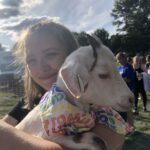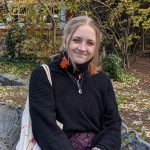
Kendall Williams
This was my first full week where I was able to use my state computer account, so I finally was able to catalog items in the museum’s online cataloging site. It was a very similar process, as it required all the same information as the physical copy that I had done before, but in some cases it did require more information. There were ways that it needed ot be adapted digitally, such as an online description and title that would be visible to the public to let them know more about the item. I cataloged a few items into the database before moving on to a different project.
I began to work on inventorying paper materials, photographs, and newspaper clippings that had been previously stored on non-acid free posters. I first inventoried all of the items, along with a short physical description of each. Then I cataloged the items as a group into the musuem’s database, along with a short description of the contents, including number of items, subject matter, and time period. Then, I took the items off of the board, labeled them each with a proper accession number, and moved them into acid free folders, which were also labeled and had a description of what was inside. They then were moved into a space in the archives.
I was happy to finally be able to work on the computer, as much of the process for accessioning and cataloging items takes place digitally now. It was helpful to do so manually at first, though, because it gave me a good idea of what to do when it came to the digital version.


